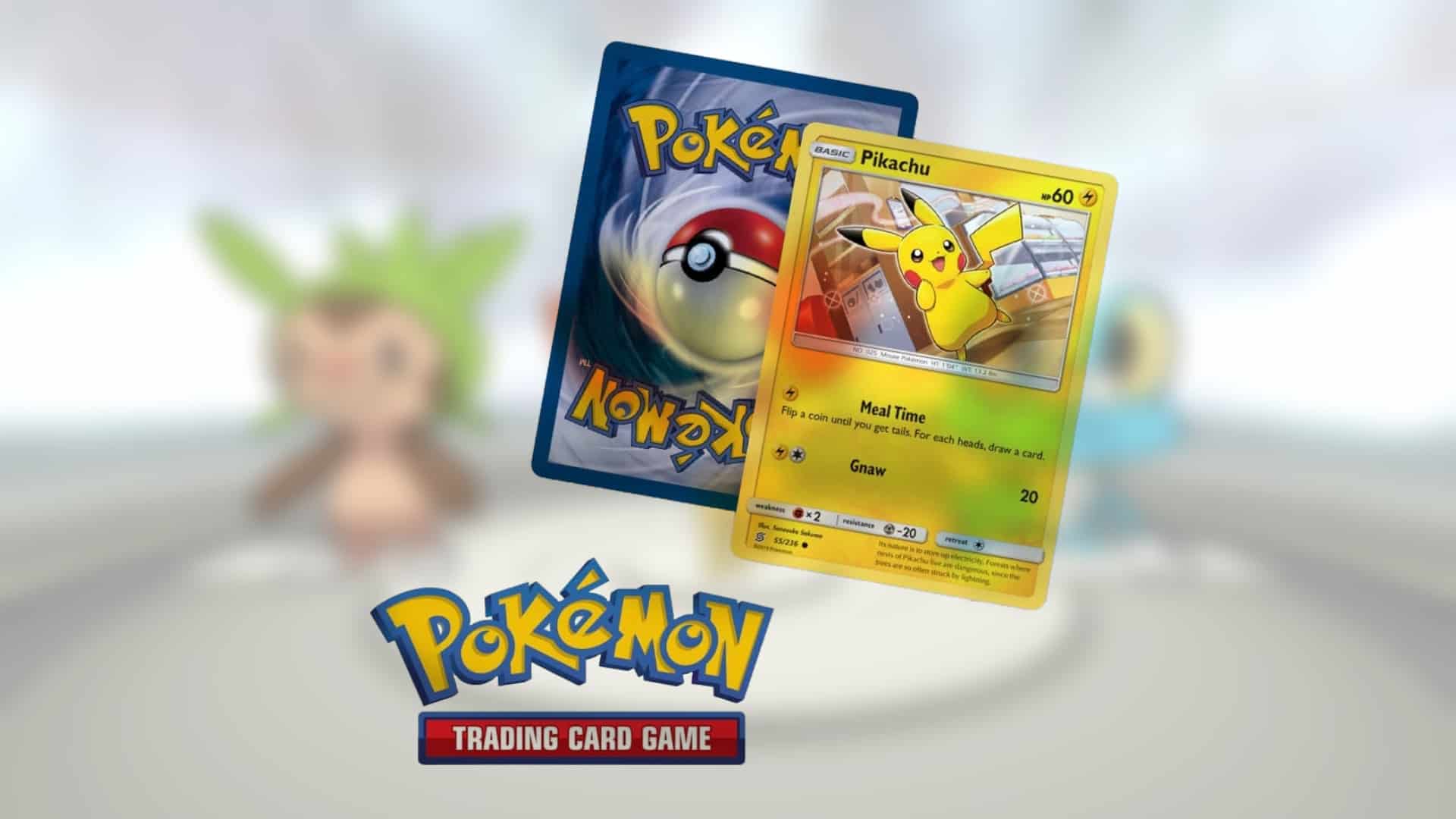The Pokemon Trading Card Game, or PTCG is a collectible card based on the world-famous Pokemon video games. Although the video games came first by a couple of months, it could be argued that the card game is even more popular. After twenty-seven years of production, 52.9 billion Pokemon cards have been produced across the world.
Although many people collect Pokemon cards to resell them for thousands of dollars, there is a robust competitive scene as well. Every year, there is a tournament called the Pokémon TCG World Championships, where players can win tens of thousands of dollars. If you plan on becoming the next Pokémon TCG World Champion, you’ll need to learn the rules of the game.
That’s what this article is for. We’re going to take you through the basics of the Pokemon Trading Card Game. Once you finish this article, you’ll be on your way to becoming a master of the game.
The Different Kind of Cards
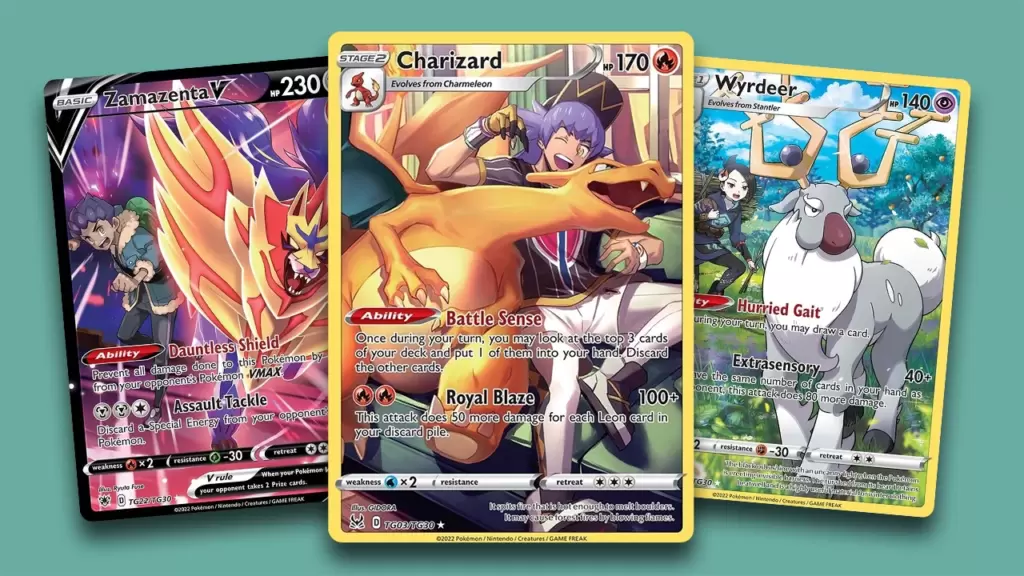
There are three main types of cards that players will use during matches.
Pokemon Cards
Just like in the video game, players use their Pokemon to battle one another. Each Pokemon has its own attacks and Abilities. Every Pokemon has its own typing that has special effects in battle. The Normal type in video games has been replaced with Colorless. It wouldn’t be a Pokemon game without evolution. Certain Basic Pokemon can be upgraded into stronger Stage 1 or Stage 2 Pokemon.
Energy Cards
To power the attacks and Abilities of Pokemon, players will need to use Engery cards that match the Pokemon’s type. Without Energy cards, most Pokemon won’t be able to do anything. By matching the Energy card to the Pokemon’s type, they’ll be able to use moves. Colorless Pokemon or attacks can use any kind of Energy card to power them.
Trainer Cards
If you want to win matches, you’ll need to give your Pokemon an advantage in battle. That’s where Trainer cards come in. These cards assist your Pokemon with Items, Supporters, Stadiums, and Pokémon Tools. Each sub-type of card has its own special set of rules at the bottom of the card.
Set-Up
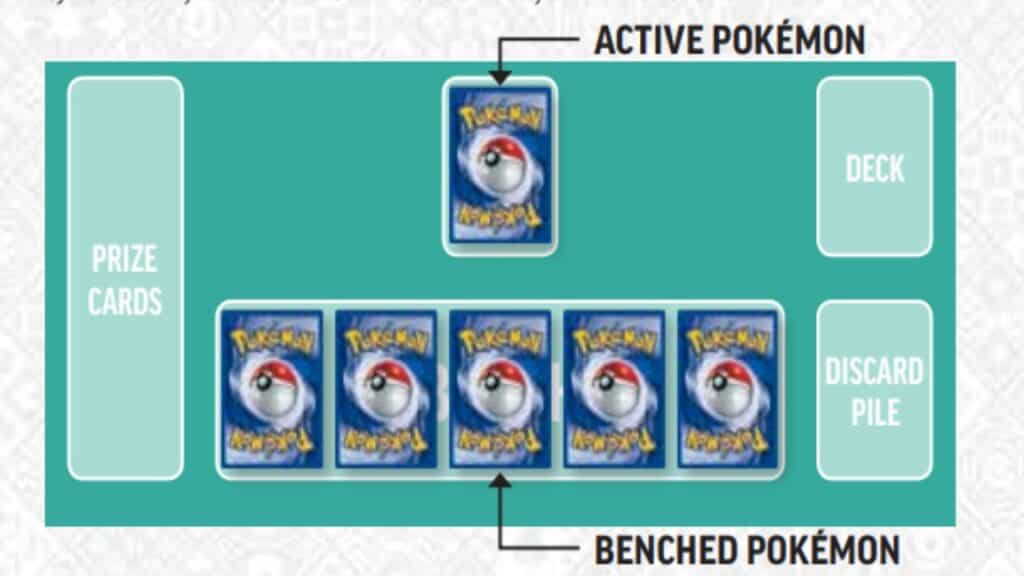
There are six different zones that make up the play area for each player.
- Deck: Each player starts with their own deck of 60 cards.
- Discard Pile: Cards taken out of play go to the discard pile. When a Pokémon is Knocked Out, it and any attached cards are sent to its owner’s discard pile.
- Prize Cards: Prize cards are 6 cards that each player sets aside, face down, from the top of their own deck while setting up to play. When you Knock Out an opposing Pokémon, you take one of your Prize cards and put it into your hand.
- Active Spot: Each player starts with (and must always have) one Pokémon in their Active Spot— this is the Active Pokémon. Each player may have only one Active Pokémon at a time.
- Bench: Each player may have up to 5 Pokémon on the Bench at any one time. Any Pokémon in play other than the Active Pokémon must be put on the Bench.
- Hand: Each player draws 7 cards at the beginning of the game and keeps their own hand hidden. The cards you draw go into your hand.
At the start of the match, players will flip a coin. The winner of this determines who goes first. After that, players will shuffle their decks and draw the top seven cards into their hands. At least one Basic Pokemon card must be placed face down in the Active Spot. Players may place up to five other Basic Pokemon cards face down on their Bench.
If you don’t draw any Basic Pokemon cards in your hand, then you must reveal your hand to your opponent and shuffle your hand back into your deck. You then draw seven more cards. Repeat this process until you pull a Basic Pokemon. Every time you have to redraw, your opponent may draw another card into their hand.
Once this is done, place the top 6 cards of your deck off to the side face down as your Prize cards. When everyone is ready, both players flip their Active and Benched Pokémon face up and start the game.
Turn Actions
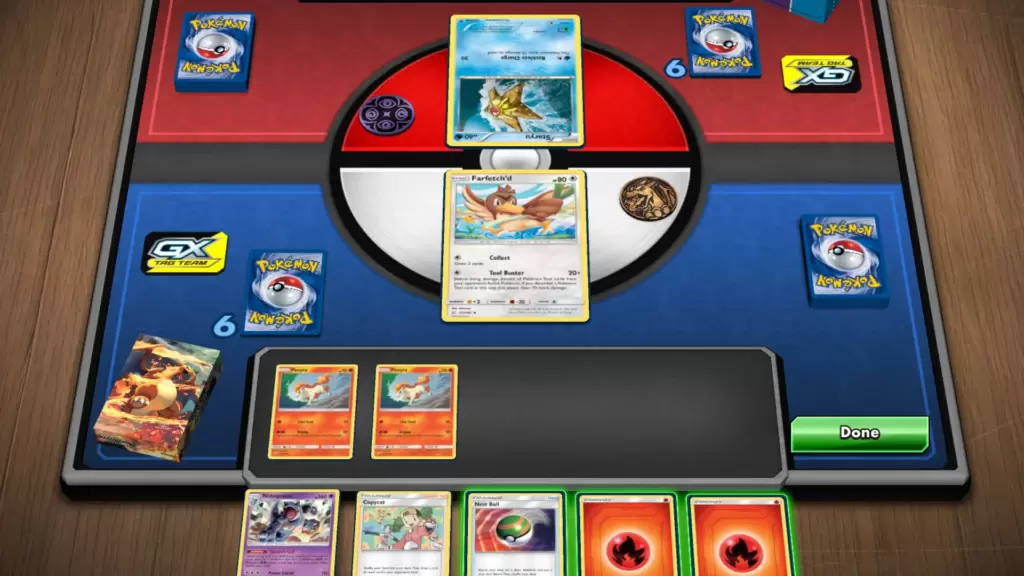
Draw a Card
At the start of your turn, you will draw a card from your deck into your hand. If you start your turn and have no more cards to draw then the game is over, and your opponent wins.
Actions
After you draw a card there are six different actions that you can take.
- Place a Basic Pokemon card: You can place any Basic Pokemon from your hand face up onto any open spot in your Bench.
- Evolve a Pokemon Card: If you have an Evolution Card for a Pokemon that’s in play, you can place it on top of that Pokemon to evolve it. A Basic Pokémon can evolve into a Stage 1 Pokémon or a Stage 1 Pokémon to a Stage 2 Pokémon. An evolved Pokemon keeps all its attached cards, damage, and conditions. A Pokemon cannot be evolved on its first turn in play. A Pokemon also can’t be evolved twice in the same turn. Any Pokemon in the Active Spot or Bench can be evolved.
- Attach an Energy card: You may place an Energy Card under a Pokemon in the Active Spot or Bench area. This is energy that can be used for attacks or Abilities. You can only attach an Energy card once per turn.
- Play Trainer cards: When you play a Trainer card, you follow the rules written on it. You can play as many Item and Pokémon Tool cards as you like. Supporter cards are played like Item cards, but you can play only one Supporter card each turn. The player who goes first cannot play a Supporter card on their first turn. Stadium cards have unique rules. Stadium cards stay in play when played. Only one Stadium can be in play at a time. New Stadiums replace old ones and end their effects. You can’t play a Stadium card that has the same name as the one in play. YOu can only play one Stadium card each turn.
- Retreat your Active Pokemon: In order to retreat an Active Pokemon, you must discard Energy from that Pokemon equal to its Retreat Cost. Once that’s done, you can switch the Active Pokemon with one from your Bench. The retreating Pokemon keeps all their attached cards and damage. Pokemon that are Asleep or Paralyzed cannot be retreated.
- Use Abilities: On your turn, you can use as many Abilities as you want. You must follow the rules and conditions written for each Ability, and it must be announced when used. Abilities from both your Active and Benched Pokémon can be used.
Attack
Once a player attacks, their turn ends, so it’s important to perform all the actions you want to do first. The player who starts the game can’t attack on their first turn. After this, players attack normally for the rest of the game. As long as the Active Pokemon has the Energy required to perform one of the moves listed, then it can attack the opponent’s active Pokemon. Some attacks require no Energy to be performed. Some Pokemon have Weaknesses and Resistances to certain types of Pokemon, which will affect the amount of damage that Pokemon will take.
Pokemon Checkup
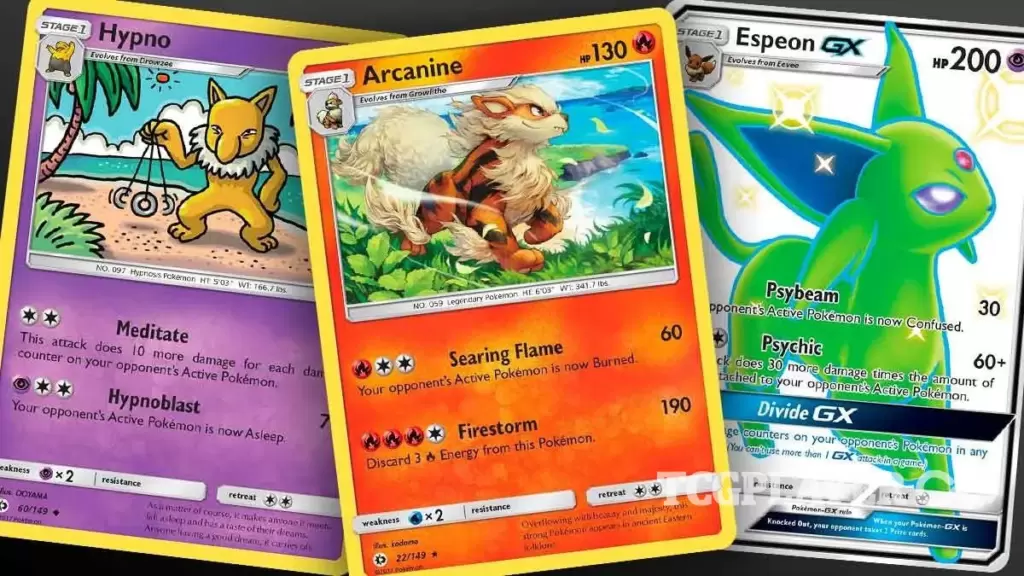
After the end of your turn, there is a step called Pokemon Checkup that you’ll need to do before your opponent starts their turn. During Pokemon Checkup, players will apply the effects of any Abilities or Trainer cards that happen during this phase. While in this phase, you may also check any Special Conditions that your Pokemon may be under.
Special Conditions
Active Pokemon can be subjected to special conditions. Once an Active Pokemon is moved to the Bench, it recovers from all Special Conditions. Pokémon also recover when they evolve. During Pokemon Checkup, you check the status of these conditions in the order of Poisoned, Burned, Asleep, and Paralyzed.
- Asleep: Turn the Pokémon counterclockwise to show that it is Asleep. If a Pokémon is Asleep, it cannot attack or retreat. During Pokémon Checkup, flip a coin. If you flip heads, the Pokémon recovers (turn the card right-side up), but if you flip tails, it stays Asleep.
- Burned: When a Pokémon is Burned, put a Burn marker on it. During Pokémon Checkup, put 2 damage counters on your Burned Pokémon, then flip a coin. If heads, the Pokémon recovers (remove the Burn marker). A Pokémon cannot have two Burn markers; if an attack gives it another Burn marker, the new BurnedCondition simply replaces the old one.
- Confused: Turn a Confused Pokémon with the top of the card pointed toward you to show that it is Confused. If your Pokémon is Confused, you must flip a coin before attacking with it. If heads, the attack works normally. If tails, the attack doesn’t happen, and you put 3 damage counters on your Confused Pokémon.
- Paralyzed: Turn a Paralyzed Pokémon clockwise to show that it is Paralyzed. If a Pokémon is Paralyzed, it cannot attack or retreat. After its owner’s next turn, it recovers during Pokémon Checkup (turn the card right-side up).
- Poisoned: When a Pokémon is Poisoned, put a Poison marker on it. During Pokémon Checkup, put a damage counter on your Poisoned Pokémon. A Pokémon cannot have two Poison markers; if an attack gives it another Poison marker, the new Poisoned Condition simply replaces the old one.
Certain conditions can be stacked while others cannot. Since Asleep, Confused, and Paralyzed all rotate the Pokémon card, whichever one happened last to the Pokémon is the only one that is still in effect. Since Poisoned and Burned use markers, those don’t affect other Special Conditions. A Pokémon could suffer from being Burned, Paralyzed, and Poisoned all at once.
How to Win
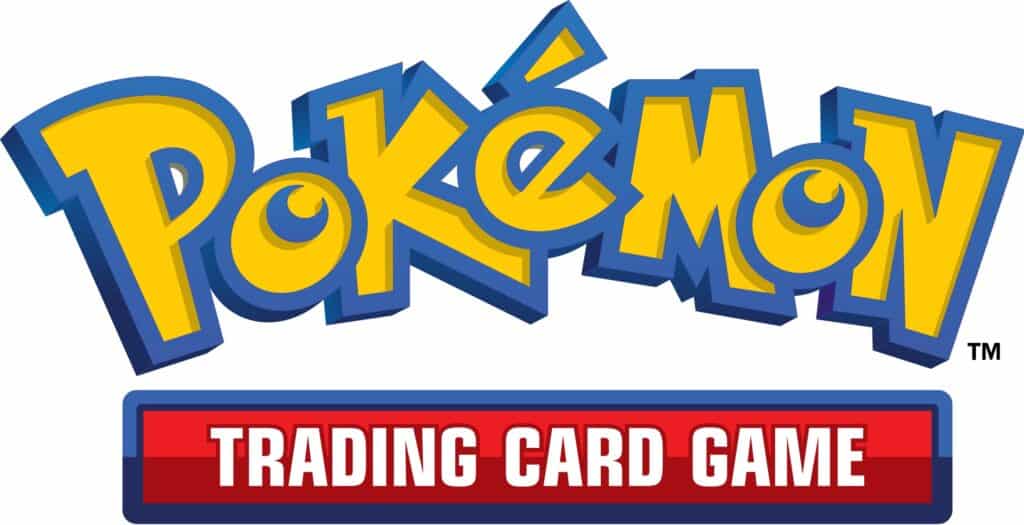
©The Pokémon Company International, Public domain, via Wikimedia Commons
There are three different win conditions for players. The most direct way to win is by being the first to take all six of your Prize Cards. The second way to win is by Knocking Out all of your opponent’s Pokemon that are in play. If your opponent has no card in the Active Spot, they lose. The last win condition is if your opponent has no cards in their deck at the beginning of their turn.
These are the basic rules for the Pokemon Trading Card Game. With this information, you should be able to handle your own in your first few matches. This game has a number of advanced rules that deal with different types of matches and card expansions. PTCG is a game that’s always changing and growing, so if you want to be the best, you have to stay updated on rules and strategies.
The image featured at the top of this post is ©The Pokemon Company.
